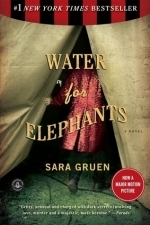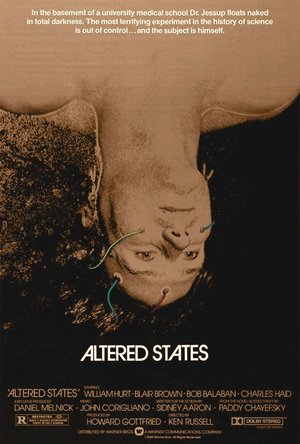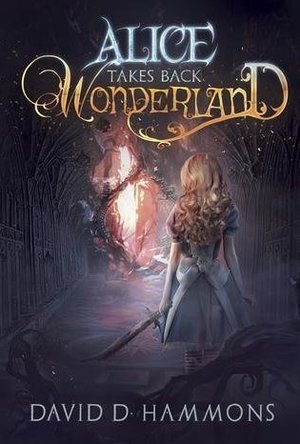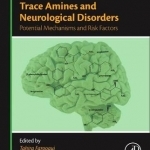
Trace Amines and Neurological Disorders: Potential Mechanisms and Risk Factors
Akhlaq A. Farooqui and Tahira Farooqui
Book
Trace Amines and Neurological Disorders: Potential Mechanisms and Risk Factors explores trace amines...

Veronika Decides to Die
Book
Veronika is a beautiful young woman from Ljubljana, Slovenia who appears to have a perfect life, but...
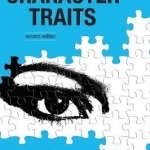
The Writer's Guide to Character Traits
Book
From Sex to Schizophrenia: Everything You Need to Develop Your Characters! What makes a person...
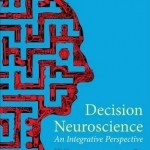
Decision Neuroscience: An Integrative Perspective
Jean-Claude Dreher and Leon Tremblay
Book
Decision Neuroscience addresses fundamental questions about how the brain makes perceptual,...
Tim Booth recommended Carrie and Lowell by Sufjan Stevens in Music (curated)
Rachel King (13 KP) rated Water for Elephants in Books
Feb 11, 2019
Jacob is by far the most interesting character of the book, especially since he tells the story as an old man in a nursing home - and has the wisdom and experience to go with his age. His emotions are infectious and I longed to sit down with him and listen to all of his stories in person way before I finished the book.
August is the kind of villain that is confusing in his evil deeds - he has schizophrenia - which makes it somewhat unfair to dislike him so much. His irrational behavior has been exploited for the almighty dollar by Uncle Al - but the real villain tends to fade into the background.
Marlena is beautiful to the point of angelic, very little of what she does can be considered wrong in any way, as she is a victim struggling for freedom for most of the book. She approaches August's mood swings with the same caution due a wild animal, and remains faithful to him despite her personal feelings, and does not leave until he first betrays her. Considering how women today will leave their husbands for any reason, I admire her strong morals.
The background is set during the Great Depression, which made for many intense situations as the circus struggled to profit, as well as the survival of the cast of characters. Though I studied this period in American history, the direct experience gave me a clearer idea of the desperation of people alive during this time - how easily morals could be put on hold for the sake of another mouthful of food or another coin in the pocket. So many men of the circus would work without pay for the promise of another meal and unending hope that life could still improve.
Rosie, the elephant, is also one of the most fascinating characters in the book. She proved to be only one example of how animals were exploited to the point of cruelty for profit. I could not help wondering where the animal activists were.
Needless to say, this book sparked many conversations and inspired many moments of personal contemplation for me. I loved this book, and I highly recommend it.

Early Intervention in Psychiatry
Education and Magazines & Newspapers
App
A leading psychiatry journal is now available on your iPad and iPhone. Fresh from the Newsstand,...
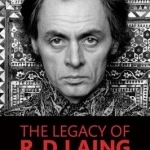
The Legacy of R. D. Laing: An Appraisal of His Contemporary Relevance
Book
The name R. D. Laing continues to be widely recognized by those in the psychotherapy community in...
Andy K (10823 KP) rated Altered States (1980) in Movies
Oct 26, 2019
He does manage to make a trip to Mexico where he hears about a tribe using a hallucinatory drug which causes some of the same effects he experienced while submerged in his isolation tank back home so he decides to try it. He has massive hallucinations, loses control of his actions and even gives in to his more primal instincts and devours a sheep. When he wakes he only remember bits and pieces of his actions, but is convinced this is the correct road for his research.
Back in the US, he decides to combine both elements of his research including use of the drug and the chamber at the same time to see the results. The results of the combination are not only dangerous to Eddie's psyche and soul, but to his physical human body as well. He performs an unsupervised deprivation experience on his own and experiences an evolution regression back to a primitive homo sapien state which is now loose in the basement of his lab and has to be stopped.
Eddie ultimately has to decide if his estranged family or his research is more important to him and if now it is too late to have them both.
Famed, provocative British director Ken Russell takes on the task of bringing this interesting, colorful and wild film to life. He already had a reputation of helming controversial films like The Devils and Tommy, so maybe this film was a step down from those.
The psychedelic hallucination sequences Eddie experiences while on the drug or in the chamber were so unique, shocking and visceral they were intense but hard to look away from. Images were being edited at such a pace your mind races as you watch them. Eddie's personal journey as a doctor and student of the human mind are fascinating to watch as he struggles with his relationship with his wife and kids at the same time. As he continues his research, he wants to understand what is happening to him, but doesn't want to be inhibited but others' desires.
William Hurt and Blair Brown have good chemistry when together onscreen and you feel her concern as she feels she is losing the man she loves to something she doesn't understand. They both field infidelity in their marriage as he tries to fill the empty space of commitment and she tries in vain to replace with others the man she truly loves.
Hazel (1853 KP) rated Alice Takes Back Wonderland in Books
Dec 14, 2018
When a book starts with “‘Do you know fairy tales are real’ asked the cat,” you know you are in for a magical ride. Nearly everyone knows the tale of the seven-year-old girl from nineteenth century London who falls down a rabbit hole and spends a day of madness in the magical world of Wonderland. In David D. Hammons version, however, Alice was a young girl from twenty-first century Missouri. On her return to the real world she was diagnosed with ADHD and Schizophrenia and forced to believe that the Cheshire Cat and the Mad Hatter were figments of her imagination. But ten years later a white rabbit appears and leads Alice back to the world where nothing makes sense.
All is not well in Wonderland. The Cheshire Cat is dead and the Ace of Spades is in charge. Barely anything is the way Alice remembers. Everything looks far too “normal” and similar to the world she comes from. Ace is determined to remove the wonder from Wonderland and create a place where madness is forbidden. Alice has a big fight on her hands as she tries to end this former playing card’s tyrannous reign and restore Wonderland back to its original insanity.
<i>Alice Takes Back Wonderland</i> is not purely a retelling of Lewis Carrols famous story. Although many of the well known and loved characters appear in this book, so do others from a variety of different fairytales: <i>Peter Pan, Pinocchio</i>, and various tales from the <i>Brothers Grimm</i>. As readers will discover, all is not exactly as it should be for these characters either. Despite them being contrasting, magical stories, Hammons has successfully merged them all together in an imaginative manner resulting in a humorous young adult novel.
Although mostly focused on the goings on in Wonderland and the other fictional locations, it is also a subtle metaphor to describe what Alice’s life had been like back in present day America. For a decade Alice was forced to take medication to help her understand the difference between reality and fantasy. It got rid of most of the nonsense thoughts she picked up during her first visit to Wonderland. In a way, that is what the Ace of Spades is doing to characters he believes are mad. He is taking the wonder out of them, just like the pills to the wonder out of Alice.
Lovers of fairytales will definitely love this book, especially those who grew up loving <i>Alice in Wonderland</i> and <i>Peter Pan</i>. In some ways it is a continuation of the original tale, yet in other ways it could be viewed as an alternative way the story could have gone. Primarily targeted at young adults, <i>Alice Takes Back Wonderland</i> is much darker than Carrols version and combines a mix of real life with fantasy. It also goes to show that no one is too old for fairytales!

